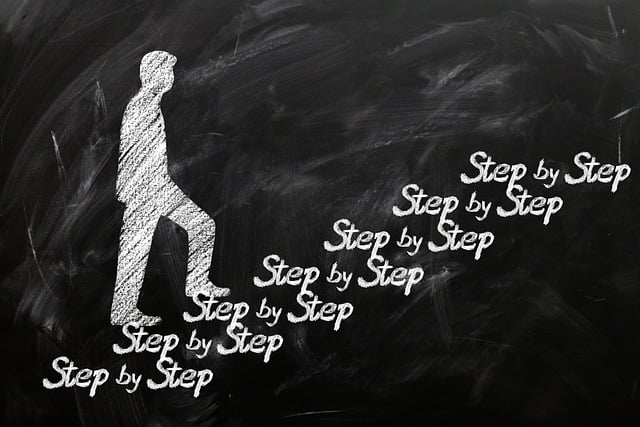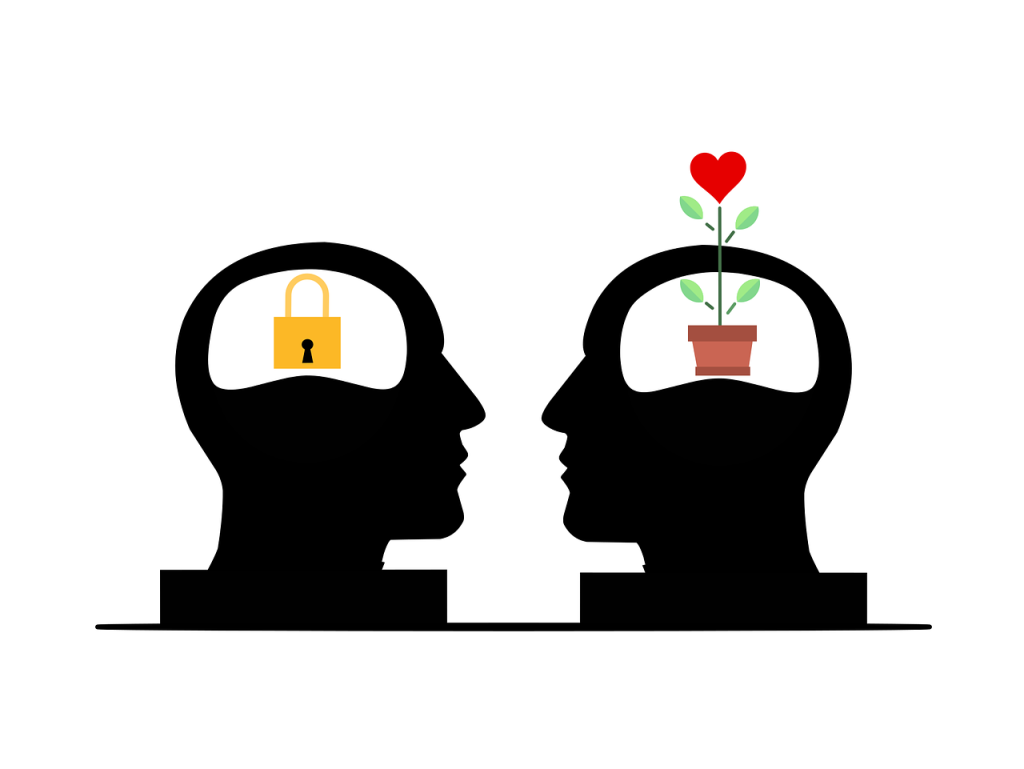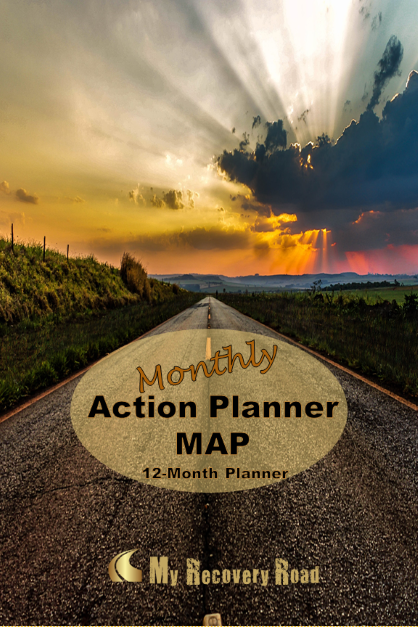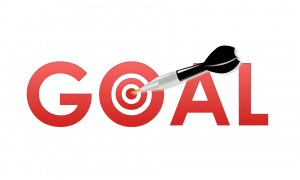Goal Setting
What Is a SMART Behavior-Based Goal?

When you’re discussing goal setting, SMART has nothing to do with your intelligence. (But it is smart to use this technique!).
SMART is an acronym that represents the five necessary facets of setting goals. Each letter stands for a different area of the goal. If you create a smart goal, your goal needs to be Specific, Measurable, Actionable, Reasonable, and Timely. Using SMART goals can set you up for success in your goal setting.
So let’s get into what SMART means!
S – Specific
S – Stands for specific, which means that your goal needs to be precise. Identify what your goal is, why you want to achieve it, and how you will get it is very important. If you can’t provide a detailed description of the goal, it will be hard to meet it. Take the time to do this part right.
For instance, “I will turn off my phone notifications while working on this project”. You set yourself to become free from the distractions to keep you focused on your daily projects.
M – Measurable
M – Stands for measurable, which means that you should be able to use this to measure success. To be effective, the road towards achieving a goal must be able to be measured.
The above example indicates how much more of the project you can do by turning off all phone notifications.
A – Attainable
A – Stands for attainable, i.e. not so overwhelming that you start out feeling as if you can’t do it. That defeats the entire purpose of the exercise. Start off with smaller goals that you know you can achieve, such as positively changing one single habit. Then focus on doing that consistently before attempting to change other habits. Goals should also be achievable or you will only get frustrated. Build on these small successes and before you know it, you’ll be achieving your big goals, as well!
R – Realistic
R – This can stand for realistic. Realistic goals can mean that you’re setting up success right from the beginning. It should be according to your personality and lifestyle. Changing your behavior to achieve a goal will never work if you don’t know yourself realistically. Know who you are, what you’re capable of, and what you’re willing to do. If you want your goal to succeed, it should be something that is realistic or you will fail. It should also be relevant to your life’s vision and match with your values. Start with easy behavior changes and fit according to your values. Once you’ve mastered those, you can ramp up on changing behaviors that might be more challenging for you.
T – Time-based
T – Stands for Time-based or time limit. Putting a deadline on achieving a specific goal can often spur more action toward that goal. If you don’t set a time limit and you can’t track what is happening, your goal will be hard to achieve. But there’s a fine line between too little and too much time. Changing behavior patterns often takes time, so make sure that you’ve accounted for this.
SMART goals can help you with setting behavior-based goals. You can follow it through and know when and how you can meet them. Doing that will result in the unexpected progress in obtaining your goals.
You may like
Featured
One Step At A Time For Breaking Addiction Chains


Breaking free from the chains of addiction can be an arduous and challenging journey. Addiction, whether it is related to substances or harmful behaviors, can have a profound impact on one’s life, affecting relationships, health, and overall well-being. It is a battle that many individuals face, but with the right tools and strategies, it is possible to overcome these challenges and create a fulfilling life in recovery.
In this article, we will delve into the power of behavior-based goals as a blueprint for breaking addiction chains. By focusing on behavior change rather than solely relying on sheer willpower or abstinence, we can develop sustainable strategies that empower us to break free from the grips of addiction. Throughout this article, we will explore step-by-step guidance for setting behavior-based goals, cultivating positive habits, redirecting negative thoughts, celebrating milestones, harnessing accountability, finding inspiration through others’ stories of triumph over addiction.
Understanding the Power of Behavior-Based Goals
In the realm of addiction recovery, behavior-based goals hold an extraordinary power. They provide a solid foundation upon which individuals can break free from the chains that bind them to their addictive behaviors. Unlike traditional goals that may focus solely on abstinence or sobriety, behavior-based goals delve deeper into the root causes and underlying patterns of addiction.
By adopting behavior-based goals, individuals embark on a transformative journey towards lasting change and personal growth. These goals go beyond simply quitting addictive substances or behaviors; they encompass a holistic approach that addresses the psychological, emotional, and social aspects of addiction. By understanding the power of behavior-based goals, individuals gain insight into their triggers, develop healthier coping mechanisms, and ultimately achieve freedom from addiction.

Identifying Triggers and Patterns: The First Step to Break Free
Understanding the intricate web of triggers and patterns that perpetuate addiction is crucial when embarking on the journey to break free. Identifying these factors is the first step towards gaining control over your behavior and achieving lasting change.
Triggers can vary from external cues, such as environments or people associated with substance use, to internal emotional states like stress, boredom, or anxiety. By carefully examining these triggers, we can uncover the underlying patterns that fuel addictive behaviors.
The process of identifying triggers and patterns requires honest self-reflection and a willingness to confront uncomfortable truths. It involves taking a magnifying glass to our daily routines, exploring the situations in which cravings arise most intensely, and analyzing our emotional state during those moments.
However, this introspective process should not be disheartening; rather, it should empower us with valuable insights about ourselves. Recognizing these triggers allows us to develop strategies for managing them effectively. With each trigger identified and understood, we gain greater control over our actions and pave the way for lasting transformation.

Setting Behavior-Based Goals: Step-by-Step Guide for Success
When it comes to breaking addiction chains, setting behavior-based goals is a crucial step towards lasting recovery. These goals focus on changing specific behaviors rather than solely concentrating on abstinence. By shifting the emphasis from avoiding negative habits to actively cultivating positive ones, individuals are empowered to take control of their lives and build a strong foundation for success.
Step 1: Identify Target Behaviors
To begin, carefully identify the behaviors that need to be addressed. Reflect upon the patterns and triggers that contribute to addictive tendencies. Are there specific situations or emotions that commonly lead to unhealthy choices? By understanding these underlying factors, it becomes easier to determine which behaviors should be targeted for change.
Step 2: Set Realistic Goals
Achieving lasting change requires setting realistic and attainable goals. Start by breaking down larger objectives into smaller, manageable steps. Consider what actions can be taken each day or week to move closer towards your desired outcome. Remember, progress is made through consistent effort over time.
Step 3: Develop Action Plans
Create clear action plans that outline the specific steps needed to achieve your behavior-based goals. Break down each goal into actionable tasks and establish a timeline for completion. This structured approach helps maintain focus and provides a roadmap for success.
Step 4: Cultivate Accountability
Accountability plays a vital role in maintaining motivation and commitment. Share your behavior-based goals with trusted friends or family members who can provide support and encouragement.

Cultivating a Growth Mindset
When embarking on the journey of breaking addiction chains, cultivating a growth mindset is crucial for long-term success. A growth mindset is the belief that our abilities and qualities are not fixed traits, but rather can be developed and improved through dedication and effort. Adopting this mindset empowers individuals to approach challenges as opportunities for growth and learning.
One powerful strategy to cultivate a growth mindset is reframing setbacks as valuable learning experiences. Rather than viewing relapses or slip-ups as failures, they can be seen as opportunities to identify triggers or areas that need further attention. By embracing a positive perspective and understanding that setbacks are part of the process, individuals can bounce back stronger, armed with newfound insights.
Cultivating Positive Habits: Strategies to Support Your Journey
When embarking on the path of breaking addiction chains, cultivating positive habits is crucial for long-term success. These habits act as the building blocks of a new and fulfilling life, replacing destructive patterns with constructive actions that promote healing and growth.
One powerful strategy is to create a daily routine that supports your recovery journey. Start by identifying activities that bring you joy and promote well-being. This could include morning meditation, exercise, journaling, or engaging in creative pursuits. By incorporating these positive habits into your day, you not only provide structure but also fill your life with activities that nourish your mind, body, and soul.
Redirecting Negative Thoughts: Tools for Building Resilience
In the journey of breaking addiction chains, one of the most significant challenges is dealing with negative thoughts. These intrusive and self-sabotaging thoughts can easily derail progress and hinder personal growth. However, by employing effective tools to redirect these negative thoughts, one can build resilience and maintain a positive mindset.
One powerful tool in this process is cognitive reframing. This technique involves consciously recognizing negative thoughts and actively replacing them with more positive and empowering ones. By challenging negative beliefs, individuals can reframe their thinking patterns to focus on their strengths and potential for growth. Additionally, practicing mindfulness meditation can help cultivate awareness of these negative thoughts without judgment, allowing individuals to let go of them more easily.

Celebrating Milestones: Recognizing and Rewarding Progress
When embarking on a journey to break free from addiction, it is essential to acknowledge and celebrate the milestones along the way. Every step forward is a testament to your strength and resilience, representing the progress you have made on this transformative path. Recognizing these milestones not only boosts your motivation but also reinforces positive behaviors that contribute to long-lasting change.
One way to celebrate milestones is by setting mini-goals that align with your overall objective. These can be small, achievable targets that mark significant moments of progress. For instance, if you are overcoming substance addiction, a milestone could be successfully completing a month without relapse. When you reach such a milestone, take the time to reflect on your achievement and reward yourself in a meaningful way.
Remember, celebrations don’t have to be extravagant or expensive; they can simply involve doing things you enjoy or treating yourself with self-care practices. Whether it’s indulging in a favorite hobby or taking a day off for relaxation and rejuvenation, make sure the celebration aligns with your values and brings you joy. By acknowledging each milestone reached, you reinforce positive behaviors while cultivating self-compassion and nurturing the belief that lasting change is within your grasp.
Harnessing the Power of Accountability: Building a Supportive Network
When embarking on the journey to break free from addiction, building a supportive network can be a crucial element of success. Accountability is like a safety net that catches us when we stumble and provides the encouragement we need to keep going. By surrounding yourself with individuals who understand your struggles and genuinely want to see you succeed, you create an environment that fosters growth and resilience.
Your supportive network can consist of various elements: trusted friends, family members, support groups, or even professional mentors. These individuals serve as pillars of strength during challenging times, reminding you of your worth and providing practical assistance when needed. They provide the listening ear when you need to vent, offer valuable advice based on their own experiences, and hold you accountable for your behavior-based goals.
Finding Inspiration: Stories of Others Who’ve Broken Addiction Chains
Within the realm of addiction recovery, stories of triumph and resilience serve as beacons of hope for those facing their own battles. These tales shed light on the human capacity for growth, showcasing the transformative power of behavior-based goals. One such story is that of Sarah, a young woman who had battled with alcohol addiction for over a decade.
Sarah’s journey to freedom began when she made a conscious decision to change her life. With the support of a dedicated therapist and a strong network of friends, she embarked on her path to recovery. Through therapy sessions and group meetings, Sarah learned to identify her triggers and embrace behavior-based goals. She set out to replace her destructive habits with healthier alternatives, such as yoga and meditation.
Conclusion
In conclusion, breaking the chains of addiction is a challenging journey that requires dedication, self-awareness, and a commitment to personal growth. By embracing behavior-based goals as the blueprint for change, individuals can take control of their lives and pave the way to lasting recovery. Remember, every small step counts – whether it’s identifying triggers, setting goals, cultivating positive habits, or finding inspiration in others’ success stories. With perseverance and support, you have the power to overcome addiction and create a brighter future filled with hope and fulfillment. So take that first step today towards breaking free from the chains that bind you and embrace a life of freedom and possibility.
Need A Step by Step Monthly Planner to Help You Set Goals?
Visit Our Bookstore to Get Your Monthly Planner ! https://myrecoveryroad.com/product/monthly-action-planner-for-addiction-recovery/

The Road MAP and The Recovery Road
It’s time for a change, a new beginning it’s time to set Goals!
Just like a road map that helps you on your journey, you need a MAP, Monthly Action Planner to map out where you are today in your recovery and where you want to be tomorrow. You have all these plans and goals in your mind, writing them down brings focus, helping you map out the right directions for a new life in recovery.
Monthly Action Planner is a 12-Month Planner that focuses on the 5 areas of Recovery that include Spiritual, Personal, Financial, Recovery, and Work Goals.
Setting personal recovery goals helps you to start reclaiming a sense of purpose and improving your quality of life. Setting goals each month helps you work on areas of your life in smaller steps, so you won’t be overwhelmed or discouraged if your goals aren’t met. Monthly Action Planner shows how to improve your chances of achieving the goals you set by introducing behavior-based goals and mindset.
What are behavior-based goals? They are goals thatwill help you create positive change in your habits and behaviors,which will help you in your attitude to meet the goals you want to achieve.
What is a mindset? Your mindset plays a major role in how you cope with challenges. Your mindset is the force behind whether you thrive or avoid challenges, how you view failures and setbacks and how you persevere toward your goals. Your mindset determines how successful you will be in every area of your life.
By changing your mindset and setting behavior-based goals you will accomplish your goals and will be successful in your new life in recovery.
Goal Setting
How Are You Doing with the Goals You Set for Yourself?
“I do not understand myself. I want to do what is right, but I do not do it. Instead, I do the very thing I hate.” Romans 7:15 (NLV)

Are you struggling to meet the goals you set for yourself? Do your attempts at reaching those goals always seem to sputter out before they can come to fruition? First have you covered your goals in prayer? Are they the goals God has for your life? If yes and you still aren’t meeting your desired goals maybe you want to shift your focus away from simply striving for a particular goal and towards actively changing your behavior.
Behavior and Outcome Based Goals
Most goals we set are based on specific outcome. These are called outcome-based goals and they are involved in a change in our lives to achieve them. Some examples of outcome-based goals would be, a better job, lose weight, not using, not drinking, getting fines paid off, or getting a car.
Behavior-based goals do play into outcome-based goals, but they aren’t the same. Behavior-based goals require you to change your attitude; to change how you think and feel towards meeting a goal. Behavior based goals focuses on changing behaviors that make achieving the outcome-based goals easier and faster.
So How Do You Set Behavior-Based Goals?
Many times, when we set goals, we focus on the negative (i.e., what we don’t want rather than what we do want). Behavior-based goals focus more on the behaviors we want to strengthen rather than the negative actions we want to remove. Boosting healthy behaviors requires our willingness to change the way we act and react in many situations.
My brothers and sisters, be very happy when you are tested in different ways. James 1:2 GW
The result of it will be a ripple effect in other aspects of our lives. It will affect far more than what we may have had in mind when creating the goal.

Behavior-based goal setting aims to create a healthy change in your habits or behaviors. That way, it will increase your chances of achieving your outcome-based goals. You can think of behavior-based goals as a steppingstone, on your way to your ideal outcome.
By practicing healthy habits, the chance to achieve your end goals is getting higher. While you’re changing your behavior, you’ll also be adapting new healthy habits in other aspects of your life. Some have nothing to do with your end goal. This is the beauty of learning to use behavior-based goals alongside outcome-based goals.
Create a larger outcome-based goal first. Then ask yourself, “What healthy habits will I need to create to get this goal?” The answer to that question will be your new behavior-based goals!
To prove the technique here is an example.

Beebe wants to lose thirty pounds. Losing weight is her larger, outcome-based goal. She knows that she needs to change the habits that are preventing her from starting it. She needs to have new habits to keep her disciplined and motivated.
She does a bit of research into these three new habits. She incorporates drinking water before each meal, walking at least 3 days a week and cutting back on carbs. She finds that she feels better and a few months later, she lost thirty pounds. Along with this, she also created stronger healthy habits that will stay with her for the rest of her life.
Give Yourself Time

Know that, as you are working your goals, you may encounter a few roadblocks along the way. But experiencing detours does not mean you won’t meet your goal. It may take time; be patience and you will learn through the process and eventually reach your goal. So don’t be too hard on yourself if you aren’t seeing the behavioral changes you want overnight.
Give yourself a realistic amount of time to make changes. You’ll find it’s difficult to change behavior all at once. The most important thing is that you improve a little bit every day. Don’t give up on your goals. Don’t get upset with yourself if you feel it’s difficult to stick with it.
Measure Your Progress

For those in Recovery setting behavior-based recovery goals helps you to start reclaiming a sense of purpose and improving your quality of life. Behavior-based goals will help you replace unhealthy behaviors and attitude with healthy behaviors and attitude. Thinking about the benefits of behavior-based goals might get you excited to get it done. You might feel more energetic to increase your self-care routine and then you have more energy to “be there” for your loved ones.
The start of a new year is a perfect time to renew our commitment to living a sober and healthy lifestyle. The words of Proverbs 3:5-6 is true – ‘Trust in the Lord with all your heart and lean not on your own understanding; in all your ways submit to Him, and He will make your paths straight.’ #substanceabusercovery #newyear #sober #trustinGod
Info Box

Monthly Action Planner is an undated 12-Month Planner that focuses on the 5 major areas of Recovery that include Spiritual, Personal, Financial, Recovery and Work. Setting goals each month in smaller steps helps to improve the chances of achieving success. https://myrecoveryroad.com/product/monthly-action-planner-for-addiction-recovery/
Goal Setting
Power Habits
8 Ways to Boost Productivity & Reach Your Goals Sooner

“The way to get started is to quit talking and begin doing.”
Walt Disney
We all have goals. We all have ambitions. We all have things that we’d like to have to happen in our lives. The good news is that those goals, ambitions and positive occurrences are possible. All we have to do to achieve them is to start doing the work that needs to be done to make them real.
You might have heard the phrase “carpe diem”. That’s Latin for “seize the day”. If you want to move your life in a different and positive direction, then make carpe diem your motto. You need to begin to seize your day and be productive so you can have the future that you want to live in.
The leadership guru John Maxwell once said that “You’ll never change your life until you change something that you do daily. The secret of your success is found in your daily routine.” This article is all about helping you to establish “power habits” in your daily routine. It will allow you to crank your productivity up to eleven. Adapting some of these habits on your schedule will improve your productivity. With this, you’ll begin to reach your goals sooner than you ever thought possible.
1. Rise and Shine

When you get up earlier than normal two things happen. First, you have more time to get things done. Productivity is all about accomplishing tasks. Starting early will mean that you’re going to start and complete projects faster.
Second, let’s talk about energy. You might already be a morning person. In which case, you already know what I’m talking about. But if you’re not naturally a morning person, it may be time to think about becoming one. Studies have shown that the most productive hours of the day occur before noon. It all has to do with natural body rhythms and cycles. So, when you get up earlier you not only have more time to get stuff done, you also have more energy. It’s a productivity win/win.
2. Be Punctual

Ok, you should have a schedule of what you want to do on any given day. (If you don’t, then start using one.) To make it as effective as possible, you need to be at the moment. Take phone calls and generally do things on time, as you scheduled them. When you’re not on time, you begin to fall behind on your schedule. That means that you have to start rushing to catch up, and it usually means that you aren’t doing your best work. Make an effort to be punctual. Get to appointments, meetings and phone calls on time. The more punctual you are, the more you’ll get done.
3. Sleep and Move

Besides food and water, your body only has two other absolute needs – sleep and exercise. When you don’t get enough rest, you don’t have enough mental energy for you to be productive. It’s the same when you’re taking less amount of time to exercise. Make sure that you put enough time for adequate amounts of both sleep and exercise. If you do, you’ll find that you have more energy and more energy equals greater productivity.
4. Developing Keystone Habits

All positive behavior is nothing more than habit. When you perform a positive action over and over it becomes habitual. You continue to take positive action without even thinking about it. Also, one positive habit will lead to other positive behaviors. That’s why developing keystone habits is so important to increased productivity.
Keystone habits are simple acts that you perform throughout your day. Just like making your bed, you establish a tone of positive productivity that will stay with you all the time. This effect can improve one keystone habit on top of another. By making your bed daily, you also make it a habit to do other tasks in the morning. Like, rinse and stack your breakfast dishes in the sink or put them in the dishwasher. The point is that when you always do what needs to be done, you develop a habit of treating everything that you do in a similar way. The end result is that your productivity soars.
5. Have a Plan

One of the major drains on productivity is not knowing where to direct your attention. Let’s face it, each day we’re faced with information overload. We get phone calls, emails, text messages and more. We use apps that are supposedly designed to make our lives easier. However, it now starts to compete for our attention. Thus, we tend to spend our time in dealing with situations that do not promote our goals and best interests.
One of the best ways to combat this problem is with a daily plan. When it comes to any task, ask yourself “What is this?”, “Why am I doing it” and “What do I want to get out of it?” Posing these questions to yourself before doing anything will allow you to focus on essential things. You can also eliminate non-productive activities. Again, productivity leads to great end results.
6. Make Room for Down Time

We have a tendency to want to remain plugged in and on top of all communications because we can. But to do so is a major mistake. One of the key ways to remain productive is to know when to take it easy and not be productive at all.
Think of your productivity as well. You lower down a bucket and pull up a drink of cold, clear water. But, if you lower down that bucket too many times in a row, you’re bound to come up empty because you’ve drained all the water.
You need to give yourself enough time to recharge and rejuvenate. You can’t be productive when your batteries are drained and you have nothing left to give. Remember to walk away from all your tasks on a regular basis. This means no checking your phone for messages, no answering emails, and no quick phone calls. Your time away is sacred. It is the key to being effective at what you do. Treat it as such.
7. Eliminate Distractions

To be productive, you have to stay focused on the task at hand. However in today’s modern world, maintaining focus is a difficult thing to do. On average, we can only put our concentration on a given task for three to five minutes. After that, we’re going to be distracted by social media, emails or other things that interfere with concentration. Obviously, you’re not going to finish your tasks when you can only focus on 3-5 minute intervals.
The secret to keeping focused on what you’re doing is by removing the sources of those distractions. Add some time to unplug with social media. You can try apps that will completely block your access to certain sites for a specific period. The less distracted you are, the more you can maintain your focus and the more productive you become.
8. Get Your Workspace Inviting

Each of us spends a great deal of time in the space where we work. It might be your office in a high ceiling room or your physical office at a remote location. No matter where your “office” is located, it needs to be inviting, comfortable and welcoming. It has to reflect your personality and style.
There’s no reason for your workspace to be spartan, cold or off-putting. You are not an anchorite and your office is not your cell. You’re not chained to your desk. Work should be rewarding, not a punishment and your office should reflect that fact.
Make sure that the furnishings are comfortable. A desk may be a necessity, but it doesn’t have to be uncomfortable. The same thing goes for a chair. Use a chair that makes you feel glad you sat down in it. Lighting, art, music, and color all have an appropriate place in your office. Imagine how your level of productivity will skyrocket when you enjoy being in your workspace.



